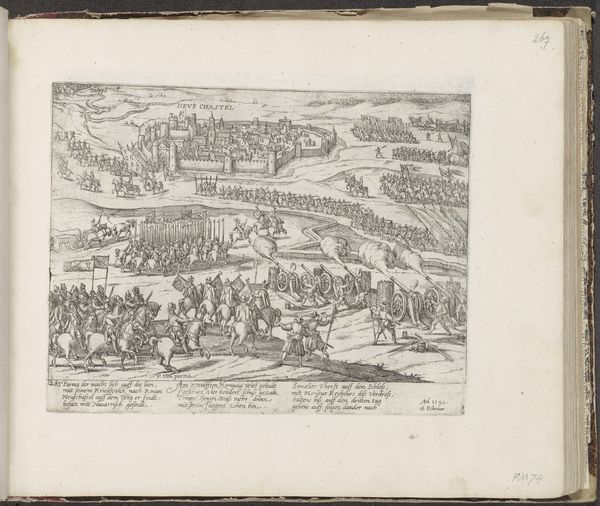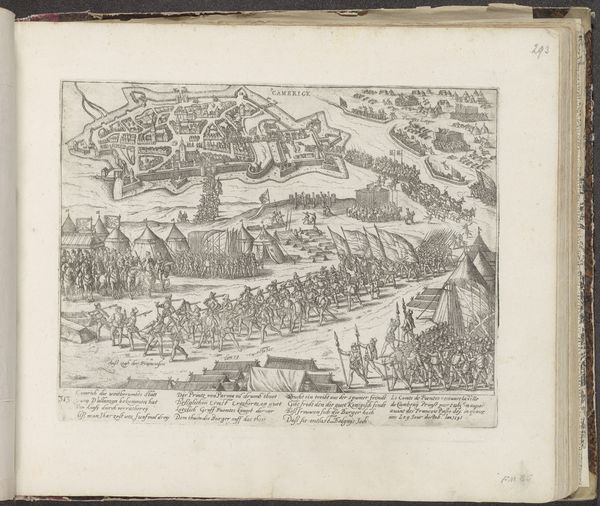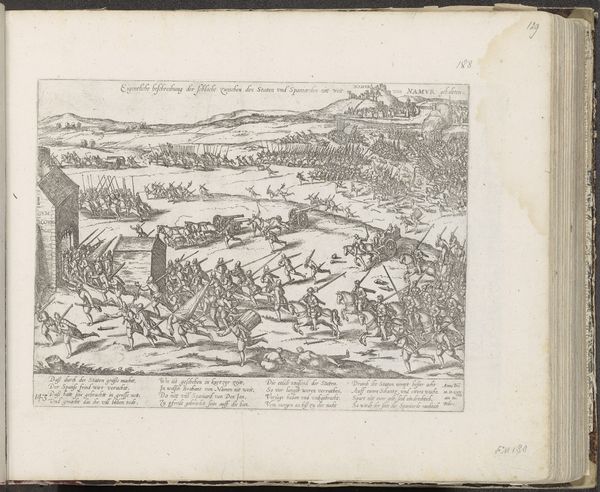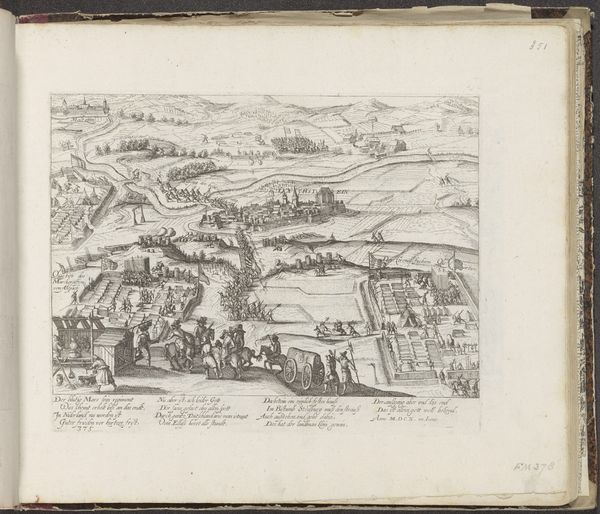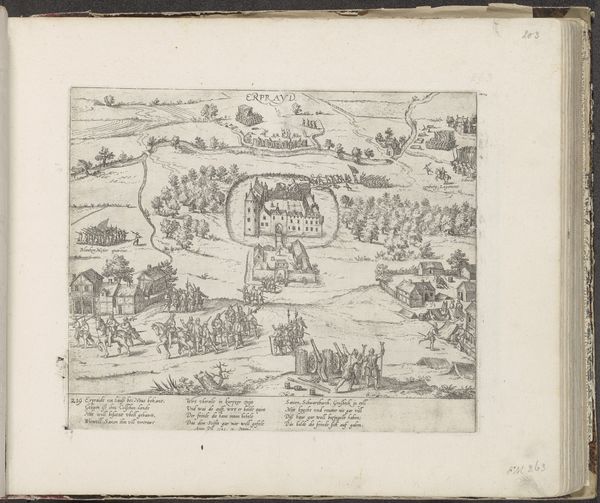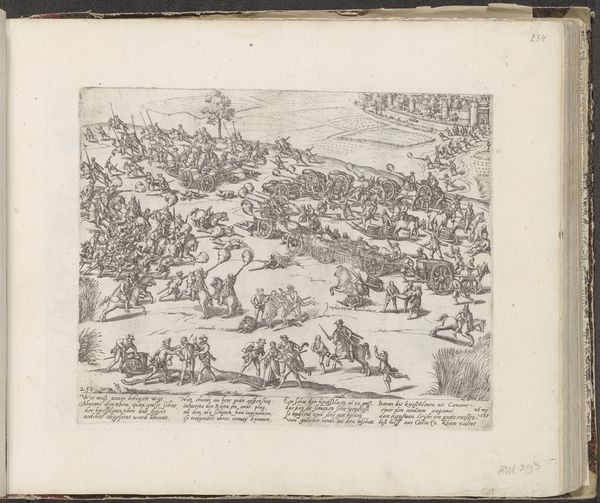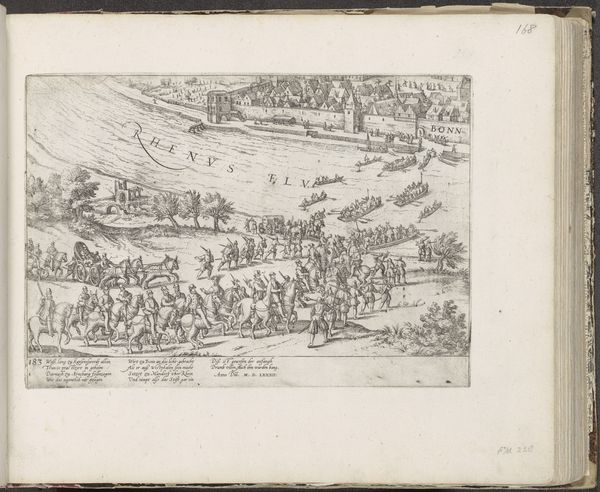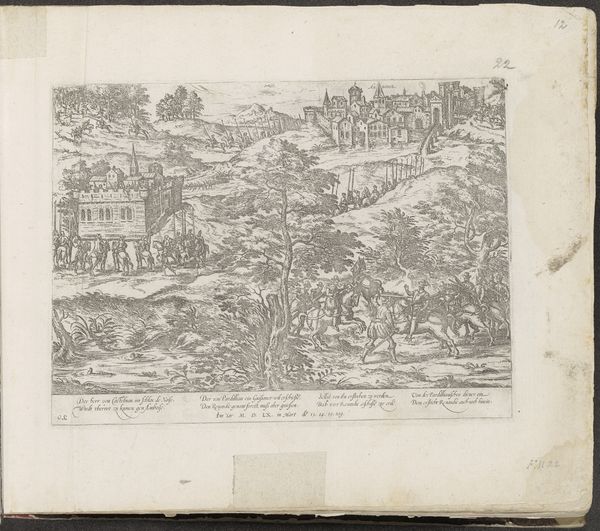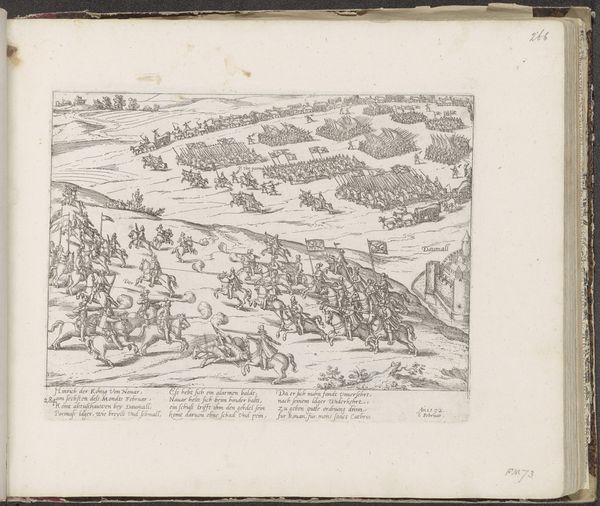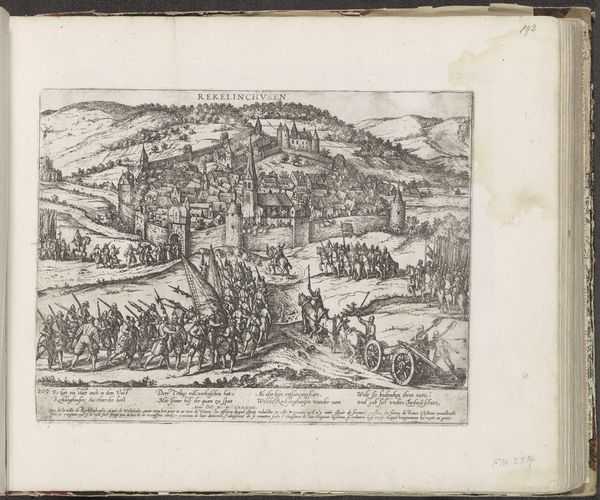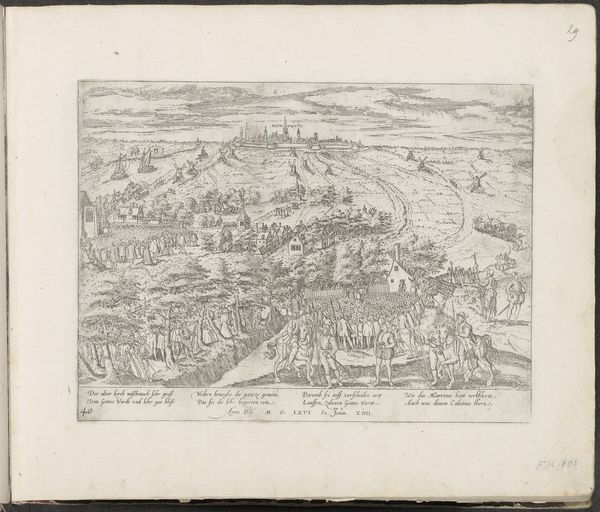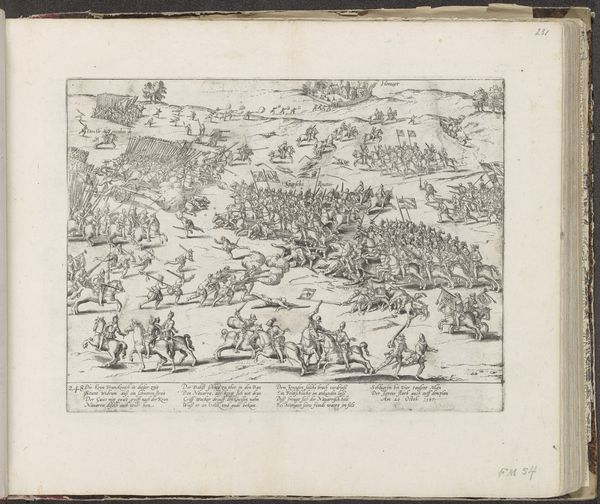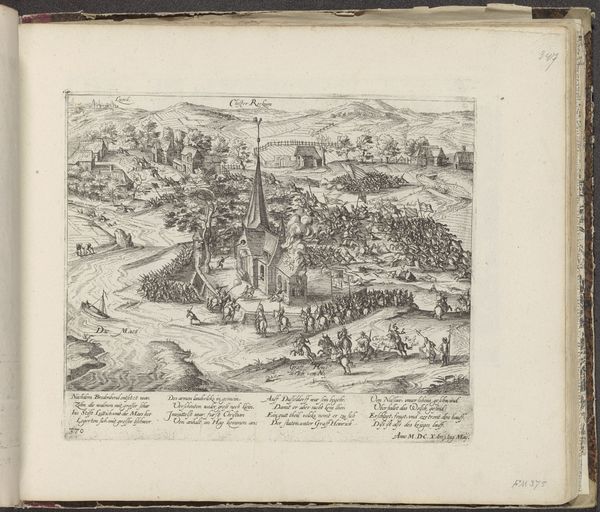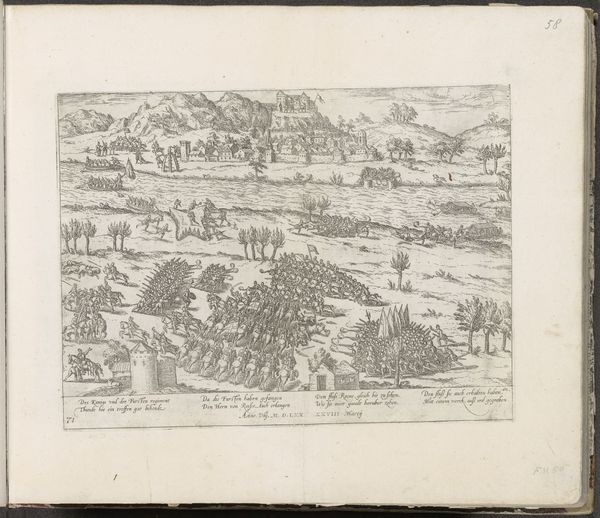
print, engraving
#
medieval
# print
#
landscape
#
history-painting
#
engraving
Dimensions: height 210 mm, width 265 mm
Copyright: Rijks Museum: Open Domain
Curator: Looking at this print, I’m struck by the sheer chaos and brutality it depicts. The frenetic energy of the battle almost jumps off the page. What are we looking at here exactly? Editor: This engraving illustrates the "Siege of Stenay by the Duke of Lorraine, 1591," created sometime between 1591 and 1593. The artist, Frans Hogenberg, meticulously detailed the conflict between the Duke's forces and the town's defenders. The scene itself is a complex blend of landscape and historical narrative, quite typical for its time. Curator: It’s interesting how the town is rendered—almost like a static backdrop, while all the “action” happens in the foreground. I’m immediately drawn to the bodies strewn across the landscape, the men grappling in the midst of war, and I begin to think about the glorification of violence during this era. How was a piece like this consumed then? Editor: Considering the historical context is crucial here. Prints like this served a dual purpose. Yes, they depicted battles and historical events, but they also functioned as propaganda. The Duke of Lorraine would want this to be a reflection on his victory, showing the might of his forces and the perceived justness of his cause, regardless of the very real violence and suffering this entails. Curator: So, it’s carefully constructing a particular narrative, then. Do you think this artwork has relevance today in examining how conflict, identity, and power continue to intertwine? Editor: Absolutely. Looking through a contemporary lens, it challenges us to examine whose stories are told and how power structures influence historical narratives. We must ask questions about marginalized perspectives from women, people of color, and others erased from this account. Curator: Understanding the dual purpose behind the print enriches the overall reading and enables deeper exploration into the politics and motives that went into creating such an image. It becomes more than a record and functions more accurately as propaganda, I think. Editor: Precisely. I hope visitors find new ways of viewing such history, seeing these works and asking vital questions.
Comments
No comments
Be the first to comment and join the conversation on the ultimate creative platform.
